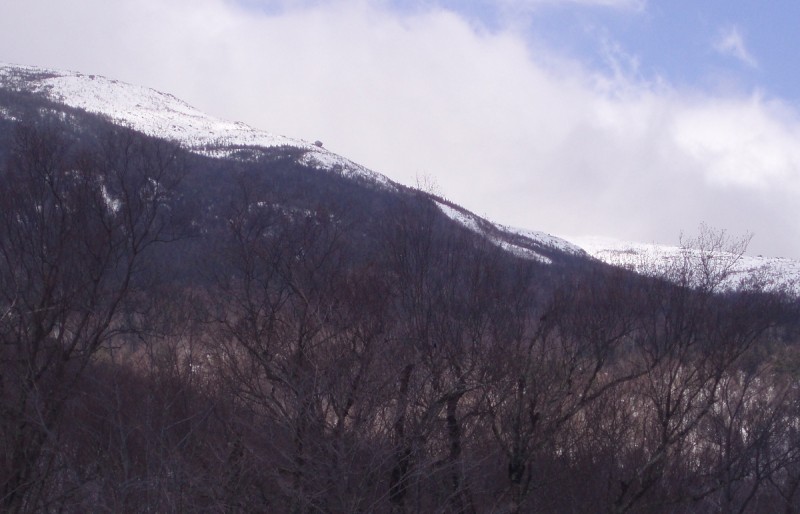
The Glen Boulder calls the lower slopes of Mount Washington home. Image by Marty Basch.
The knowing eye spots it high above a curve on winding Route 16 through Pinkham Notch. The sport utility vehicle-sized boulder has been a White Mountain landmark for some time. Looking somewhat lonely on its perch, the massive glacial erratic rests on a snow swept shoulder of New Hampshire’s Mount Washington, above the dwarf trees but thousands of feet below the summit.
From a distance, the Glen Boulder seems it is about to tumble at any minute. But from the looks of things on the lower slopes of the mighty mountain, it’s not going anywhere anytime soon.
The time for a visit was a Saturday morning, when many passing motorists were heading for the ski slopes. Patches of blue sky, foreboding dark clouds and wisps of white were competing for stage time overhead as forecasters were calling for a one in three shot at showers as the calendar teetered on the edge of winter.
Summits are the natural goal to hikers. Why climb a mountain if you’re not going to the top? Time is always a factor. But lakes, ponds, huts, waterfalls, scenic ledges and apparently a big ol’ rock also make for ideal destinations by foot.
The trek to the Boulder, though only a three mile roundtrip excursion, is not to be taken lightly. The trail punches above treeline and is on Mount Washington, a mountain with that home of the world’s worst weather thing going on. That wicked weather can blow over the eastern shoulder quicker than a tumbling skier down the Tuckerman Ravine headwall next door.
The trail is also steep—both ways.
The trailhead elevation is a about 1,975 feet and the Boulder sits at 3,729 feet making the moderate trek a 1,750-foot elevation gain. That’s why there’s some huffing and puffing involved.
Footprints in the snow show signs of life from several mammals, human, dog and lower on the food chain. The middle of the path had been packed, and the sound of the snowshoes crashing down on the crusty trail walls at times guaranteed that silence in motion wouldn’t be found. Water had turned to ice, fat and solid even in December.
Cliffs are excellent theaters for the display of ice. As the trail steepens it passes a cliff where snow and ice have gained a foothold that will be relinquished in the coming weeks and then crosses the Direttissima Trail (that’s Italian for “most direct route”) before winding upward. The lack of trees provide an easy view of Wildcat Mountain in the notch. During frequent rest stops the humps of Wildcat become more visible the higher one is on the trail. Breaks of blue with the sparkle of white in the foreground foreshadow the above-treeline goal of the Boulder. The snow covers summer’s steps. The Avalanche Brook Ski Trail, ski tracks in place, shows signs of use. It’s about a 5.5-mile ski trail that runs parallel to Route 16.
The conifers start to shrink. The trail is unrelenting, a straight shot without the steps. Near treeline, steep rocks make the going more difficult. Crampons are a boon, but the shoes themselves are too bulky. It would have been best to take them off, and put the traction grips on underneath.
Treeline is magnificent. Cairns stand sturdy, seemingly unmovable against the wild weather that frequents their neighborhoods. . There is one more short shot through the spruce before the Boulder.
The giant rock is cold. What a place it sits in. Mount Washington, Wildcat, north to the city of Berlin and south to small towns, the Boulder is on some fine and picturesque real estate no matter the season. As long as it continues to win the war against gravity, it’s a good place to visit.
 Your Privacy Choices
Your Privacy Choices
 The
The